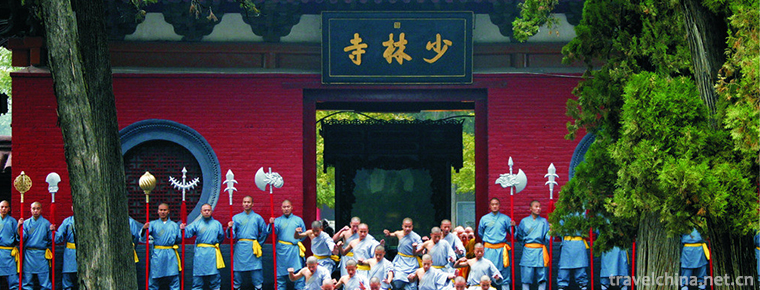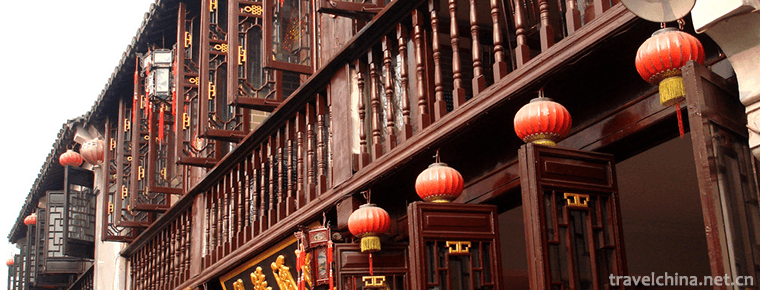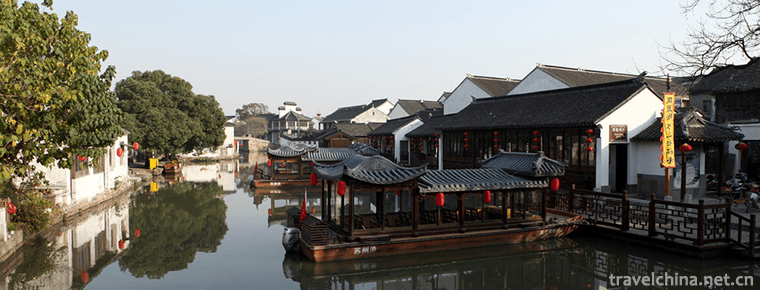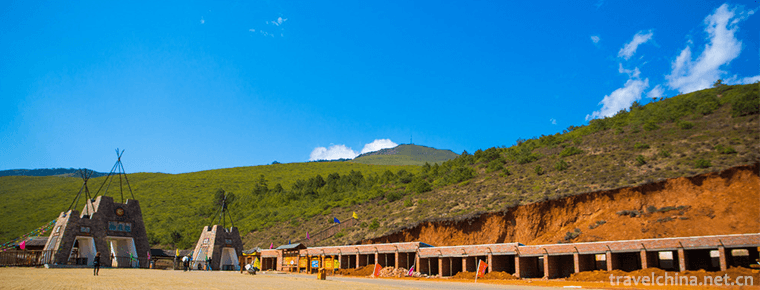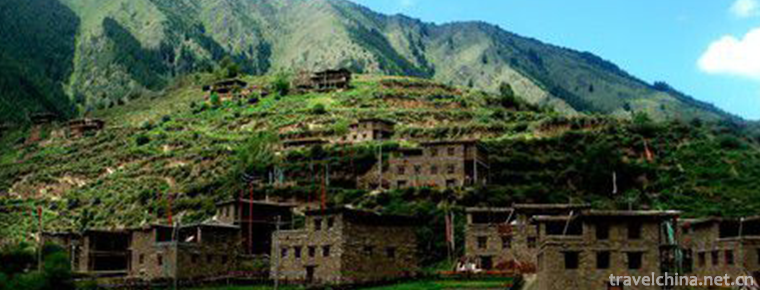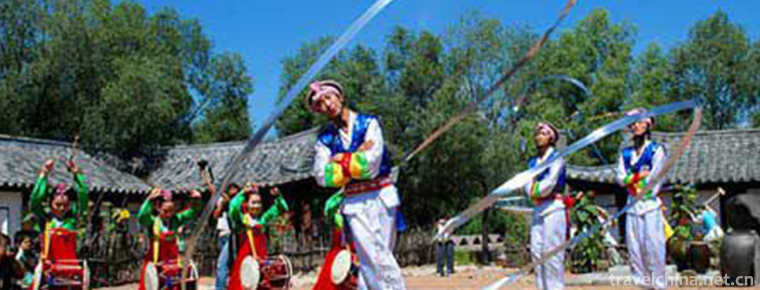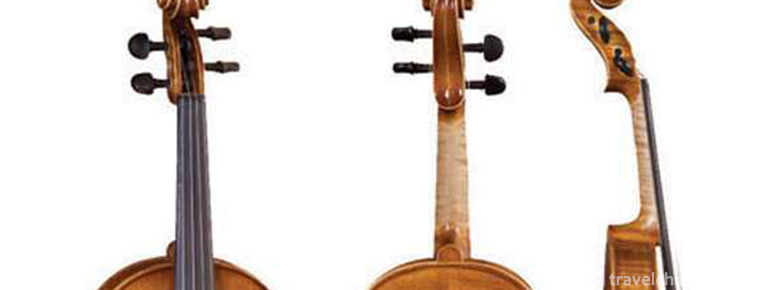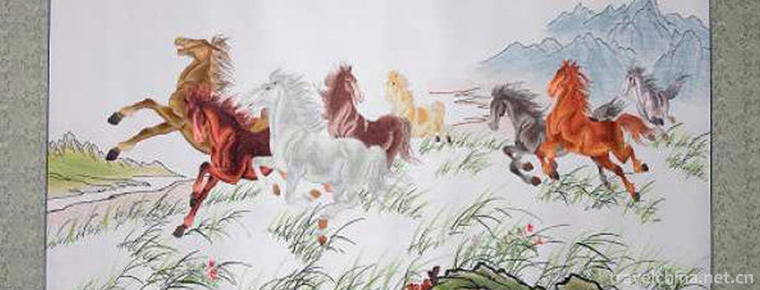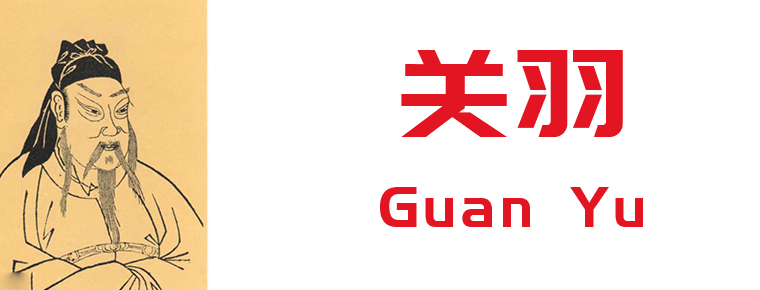White Horse Temple Baima Temple
Baima Temple is located in Baima Temple Town, Luolong District, 12 kilometers east of the old city of Luoyang City, Henan Province. Founded in the eleventh year of Yongping in the Eastern Han Dynasty (A.D. 68), the first ancient temple in China, the world-famous Kalan, is the first official monastery built after Buddhism was introduced into China. It has the name of "ancestral court" and "interpretation source" of Chinese Buddhism. It has a history of more than 1900 years. Existing sites and monuments were left in Yuan, Ming and Qing Dynasties. A large number of dry lacquer statues of Yuan Dynasty, such as Buddha III, generals of two days and Arhats of eighteen, are preserved in the temple, which are very precious.
In 1961, Baima Temple was announced by the State Council of the People's Republic of China as the first batch of national key cultural relics protection units. In 1983, it was designated as the key monastery of Chinese Buddhism by the State Council. In January 2001, Baima Temple was named the first AAAA class scenic spot by the National Tourism Administration.
Main attractions
Architecture
Before 1990, the main buildings of Baima Temple were the mountain gate, palace, and Qiyun Pagoda. In 1990, on the basis of the original buildings, the Baima Temple added bell and drum tower, Thai-style Buddhist hall, sleeping jade Buddhist hall and the living room and Zen hall in the Qiyun Pagoda courtyard.
hall of a Buddhist temple
Located on the central axis from south to north, from front to back, there are main buildings such as Shanmen, Tianwangdian Hall, Grand Buddha Hall, Grand Mansion Hall, Direction Hall, Qingliangtai and Piluge Pavilion. Among them, the Temple of Heavenly Kings is a single eave Xieshan style, with five broad East and west, four deep South and north, and four statues of Ming Dynasty Jiaji Maile Buddha, four clay statues of Heavenly Kings, and the statue of Wei Jintian; the Hall of Buddha is a single eave Xieshan style, five wide East and west, four deep North and south, and one Buddha, Wenshu, Puxian two Bodhisattvas, two disciples of Kaye and Anan, two supporters, two statues of Guanyin Bodhisattva, and other statues. There are five wide in the East and west, four deep in the South and four deep in the north. They are for Sakya, Amitabha and Pharmacist "Buddha III". They are Wei Gu and Wei Li for two days, 23 Yuan Dynasty jacketed statues such as 18 Arhats, and clay statues of Wei Li Tian for others. They are connected with the leading hall, the hard mountain style, the wide in the face, and two deep ones, which are for Amitabha Buddha and Guan Shiyin, the great momentum to the second Bodhisattva statue. Pilu Pavilion is located on the Qingliang platform. There are 5 Bodhisattvas in the East and the west, and 4 Bodhisattvas in the north and south.
bell tower and drum tower
They are located on the East and west sides of the North-South central axis in the mountain gate. Among them, the Bell Tower was built in June 1991 with 4 million yen donated by Mr. Guonamura Baohang of Japan and 600,000 yuan donated by Baima Temple, and the Drum Tower was completed in 1992. Bell and Drum Tower is a square corner tower, 7 meters high, double eaves Xieshan style, covered with gray tube tiles, forehead painted, built on stone platform foundation. The construction of the bell and Drum Tower restored the ritual ceremony of morning bell and evening drum in the temple, and restored one of the eight landscapes of Luoyang with a long history, the "bell sound of Ma Temple".
Fabao Pavilion and Tibetan Classic Pavilion
They are located on the East and west sides of Qingliangtai, which is 25.2 meters long in East and west, 22.5 meters wide in North and south, and 5 meters high. It was completed in 1995. The two pavilions are of the same shape, with double eaves and hills. They are sitting in the north and facing the south. They are 5 rooms wide and 4 rooms deep. They are 18.5 meters long and 12.95 meters wide. They are painted with Zhu lacquer cylinders, painted with forehead and covered with gray cylinder tiles. Among them, the cabinet of Tibetan Sutras is dedicated to the ancient Chinese Buddha presented to Baima Temple by Thai Buddhist circles. There are more than 10 kinds of Tibetan Sutras, including the Dragon Sutra, the Great Chinese Sutra, the Japanese Dazang Sutra, the Tibetan Dazang Sutra and the Dunhuang Dazang Sutra. The cabinet of Fabao is dedicated to a bronze Buddha statue presented by Indian Prime Minister Rao during his visit to China in 1993, and has dozens of "magic treasures".
Thai style Buddhist temple
Located 100 meters outside the west wall of the temple, it was built in 1992 and completed in April 1995. Sitting on a platform 27.3 meters long, 21.3 meters wide and 1.2 meters high, the Hall is facing the east from the west. The hall is 14.4 metres long in North and south, 7.5 metres wide in East and west, and 10 metres high. Its pillars and walls are inlaid with marble, with triple eaves and glazed tiles on top. It has a distinct Thai architectural style. In this hall, a bronze Buddha presented by Thai friends is worshipped.
The Jade Buddha Hall
Located on the east side of the Great Buddha Hall, it was originally built as Zhaitang in 1996. The hall is a five-bay hard hill building, 17.25 meters long in North and south, 5.4 meters wide in East and west. It is built on a stone platform and worships a sleeping Jade Buddha in the hall.
Jade Buddha Hall
The sixth patriarch Hall
Located in the south of the west side of the Great Buddha Hall, formerly the ancestral hall, a hard mountain building, seven rooms in the west, 24.5 meters long in the north and south, 5.4 meters wide in the East and west, was built on a stone platform. The temple is dedicated to wooden statues of the six ancestors of Zen Buddhism.
Qiyun tower
Qiyuntayuan is the only Bichuni Daoist in Henan Province. The main buildings in the courtyard are the renovated Qiyun Pagoda in the Jin Dynasty and the newly built Zhaitang, living room and Zen house. Among them, Qiyun Pagoda was first built in the Eastern Han Dynasty when Emperor Ming Dynasty, originally known as the "Sakyamuni Shrine Pagoda", which was destroyed repeatedly in the war, and was rebuilt in the fifteenth year of Jin Dading (1175). Jinxiu Sakyaja Shrine Pagoda is a square brick Pagoda with thick eaves, 13 stories and a height of about 25 meters. It is one of the earliest existing Jin Dynasty ground buildings in Luoyang area. In Qing Dynasty, Baima Temple was renamed "Qiyun Pagoda" according to the records of the founding of Qiyun Pagoda by Emperor Ming of the Eastern Han Dynasty. After the founding of the People's Republic of China, the people's government of Luoyang City implemented the protection of Qiyun Pagoda, which was built in 1990 and covers an area of 15 mu. The courtyard is situated in the north and facing the South with a rectangular plane. On the central axis from south to north, there are many buildings such as mountain gates, freeing pools, stone arch bridges and Qiyun Tower. On the East and west sides of Qiyun Pagoda, there are attached buildings: three Buddhist chanting halls and three Zhaitang are built on the West side, three living rooms and three training classrooms are built on the East side, and another Zen hall is built, all of which are of hard mountain type. On both sides of the mountain gate are large Buddhist monument galleries, on the West are portraits of the 33rd ancestors of Zen Buddhism, and on the East are "Sakyamuni Yinghua deeds" and the great monk De Mubao. Around 1999, Baima Monastery took the Digong Temple built by Baima Monastery Town Government into the ownership of the monastery and rebuilt it. In addition, new tourist facilities such as rockery, ornamental Pavilion and free-life pool have been built.
Inscriptions on a tablet
Baima Temple preserves more than 40 ancient inscriptions. Among them, the most historic ones are the stone inscriptions of Song Chongning in the second year, the stone inscriptions of Jin Dynasty "Rebuilding the Sakyamuni Shrine Tablet", the stone inscriptions of Longchuan Monk's Testament in the Yuan Dynasty, the stone inscriptions of Zuting of Luojing Baima Temple in the Yuan Dynasty, and the stone inscriptions of Baima Chan Temple in the Ming Dynasty
Buddha statue
Since 1990, Baima Temple has received Buddha statues presented by international friends and residents, which are offered in different palaces.
Thai Buddha statues are enshrined in Thai Buddhist temples. In 1991, Mr. Watana, Minister of Interior of Thailand, and Mrs. Chang Yuan, a friend of Thailand, presented them to Baima Temple for worship. The statue of Buddha is copper gold, 7.2 meters high and weighs 6.68 tons.
The statue of Prince Sakya is enshrined in the cabinet of Fabao. It was presented after visiting the White Horse Temple during Indian Prime Minister Rao's visit to China in September 1993. The Buddha statue is 1.50 meters high, with tall meat buns with threads and a left-sided robe on the beard seat.
The ancient Chinese Buddha, thumb-sized, bronze and gold, sitting on the seat of Xumi, is the only beautiful Buddha statue in the world. Originated in the Eastern Han Dynasty of China, it was first built at Baima Temple in Luoyang, then drifted among the people, spread from the Western Regions to South Asia and Southeast Asia, and finally collected in the Thai Museum and a wealthy businessman in Thailand. In 1995, Thailand duplicated two of them, one of which belonged to Baima Temple and was enshrined in the Tibetan Sutra Pavilion.
Wood Jade Buddha was carved with Myanmar Jade Respect by some residents in Shenzhen and Guangzhou around 1996 under the inspiration of Benhuanda Monk of Hongfa Temple and Yinxian Master of Baima Temple. In December 1996, it was escorted by Yinxian Master and sent to Baima Temple for worship in Wood Jade Buddha Hall. On December 19, 1997, the Baima Temple held the Kaiguang Law Conference. The statue is carved from Burmese jade. It is 5 meters long and weighs 8 tons. It lies side-by-side on the couch.
wishing well
The Baima Temple scenic area is said to have a thousand-year-old wishing well. Legend has it that this millennium wishing well can bring good luck, good health and safety to people, so many tourists who come to visit the ancient well scramble to throw coins to the wishing well in order to achieve "good luck". According to a monk in the Baima Temple scenic area who is in charge of cleaning up the coins in the ancient wells, the practice of throwing coins into the wishing wells in order to achieve "good luck" has a long history, especially the Chinese and foreign tourists who come to visit the temples and burn incense and worship Buddhas on major holidays have made special efforts to drop coins in the wishing wells in order to "good luck and peace". They are busy enough to clean up the ancient wells at most in a day. Various coins three or four times.
Located on the west side of the Great Buddha Hall, it was originally a Zen Hall with five halls of hard mountain architecture. It is 17.25 meters long in North and South and 5.4 meters wide in East and west. It was built on a stone platform and worshipped a Jade Buddha in the hall.
International Buddhist Temple Court
India Buddhist temple
On June 25, 2004, former Indian Prime Minister Vajpayee visited the White Horse Monastery and paid a pious visit to the graves of two Indian eminent monks, Mahatma Mahatma and Zhufran, at the White Horse Monastery. During the pilgrimage, inspiration came from the idea of building a Buddhist temple with Indian architectural style in Baima Temple. Thereafter, through friendly consultation between China and India, the intention of building the palace was reached.
From April 9 to 12, 2005, Premier Wen Jiabao of the State Council visited India. During his visit, Premier Wen and Prime Minister Manmohan Singh of the Republic of India jointly attended the signing ceremony of the Memorandum of Understanding on the construction of the Indian Buddhist Temple at Baima Temple in Luoyang, which was included in the joint statement of China and India.
The Indian Style Buddhist Hall covers an area of 6,000 square meters and a building area of 3,450 square meters. The layout of the main building is regular and ingenious. In the center of the Great Buddha Hall, a statue worshiping Buddha's sayings is installed with a glass skylight on the top. The sunlight shines through the skylight and shines around the statue. The bottom of the Great Buddha Hall is designed with a water system, overlooking the hall and the water system, like a lotus blossom.
In July 2006, the Indian Buddhist temple was broken to the west of Baima Temple and the south of Thai Buddhist temple. The provincial and municipal leaders participated in the foundation laying ceremony.
After decades of elaborate construction, a grand Indian style Buddhist temple was inaugurated in 2010. Indian President Pratiba Dwisingh Patil and Vice Chairman of the National Political Consultative Conference Wang Zhizhen attended the ceremony of the completion of the Buddhist temple and cut ribbons and unveiled tablets for it. Indian Buddhist temple is rigorous and rigorous, and its center is a huge bowl-shaped dome, mysterious and unpredictable; His Highness is constantly flowing with water, clear and holy; the outer corridor of the Buddhist temple is surrounded by quiet and orderly, transcendent and free from vulgarity. The whole temple is well decorated, elegant in style, beautiful in sculpture, meticulous and meticulous, like the Western Heaven. A Buddhist building with Indian classical style stands side by side with traditional Chinese Buddhist monasteries. It is a symbol of the good relationship between the Chinese and Indian people from generation to generation.
Burma Buddhist temple
Myanmar Style Pagoda is located in the northwest side of Baima Temple and west of Thai Style Pagoda Court. It is 108 meters long in North and 108 meters long in South and 65 meters wide in East and west, with a total area of 7020 square meters. The main structure of the Burmese style Buddhist pagoda is the Great Golden Pagoda, which is reduced to 3:1 in size according to the Ryde Guangda Golden Pagoda. It is 32.92 meters high, with a base diameter of 51.71 meters and an exhibition hall at the bottom. The east, west, South and north of the Great Golden Pagoda have their own main gates. These four main gates, as well as the walls of the Buddha Pagoda Garden in Myanmar, were transplanted directly in accordance with the Mandalay palace style of the Gongbang Dynasty, with festive red and rich gold as the main colors. In addition to the main entrance, the East and west sides also have a simple small door, 3.75 meters high, on which the words "Great Golden Pagoda (Sanskrit transliteration) are written in Burmese.
In 2010, at the invitation of the State Administration of Cultural Relics, Mr. Guo Tissou, Minister Counsellor of the Myanmar Embassy in China, participated in the Henan Tour. During his visit, he learned that a Buddhist pagoda dedicated to Myanmar Buddha statues could be built at Baima Temple in Luoyang. In early November of the same year, after reporting to Myanmar's Ambassador to China, Wu Denglon, Minister Counsellor Guo Tissou wrote to Mayor Guo Hongchang of the Luoyang People's Government to inquire about the construction of the Buddhist Temple. In December of the same year, Mayor Guo Hongchang wrote a letter to Minister Counsellor Guo Tisso to give a detailed introduction to the Myanmar style Buddhist pagoda reserved at Baima Temple.
On April 10, 2012, the founding ceremony of Myanmar-style Buddhist pagoda was held as scheduled, and 17 members of Myanmar's Minister of religion attended the ceremony. Myanmar Style Buddhist Pagoda is funded by the Myanmar Government and contracted and organized by Myanmar Asia World Co., Ltd. The decorative materials of Burmese style pagodas are donated by the Burmese government. Every time the materials reach Baima Temple, monks will hold a solemn prayer ceremony. In June 2013, the main project was completed. In June 2014, after a year of intensive construction, all the projects were successfully completed.
As a symbol of friendship between the Chinese and Myanmar peoples, Myanmar style Buddhist pagodas have attracted widespread attention. Leaders at all levels, such as the State Religious Bureau of China, the Buddhist Association of China and the competent provincial and municipal authorities, have successively visited the construction site to check the progress of the project. The State Administration of Religious Affairs of China, the People's Government of Henan Province, the Religious Affairs Bureau of Henan Province, the Cultural Relics Bureau of Henan Province, the Office of Foreign Affairs and Overseas Chinese Affairs of the People's Government of Henan Province and the People's Government of Luoyang City have successively made important instructions on Myanmar-style Buddhist pagodas. Minister Dura Wu Minmao of the Ministry of Religion of Myanmar and Ambassador Wu Dingwu of the Embassy of Myanmar in China have visited Baima Temple many times to guide the construction of Myanmar-style Buddhist pagodas. President Thein Sein of Myanmar also keeps an eye on the progress of Myanmar-style pagodas.
On June 30, 2014, the inauguration ceremony of Myanmar Style Buddhist Pagoda and the Anfeng Kaiguang Fair was solemnly held at Baima Temple. President Wu Thein Sein of the Federal Republic of Myanmar, Director-General Wang Zuo'an of the State Religious Affairs Bureau, Governor Xie Fuzhan of Henan Province, Ambassador Yang Houlan of China to Myanmar, Standing Committee of Henan Provincial Committee and Secretary of Luoyang Municipality, Chen Xuefeng, Vice Governor Zhang Guangzhi of Hen The person in charge participated in the event and was warmly received by the elder Chuan Yin, president of the Chinese Buddhist Association, the vice-president of the Chinese Buddhist Association, the great monk Yongxin, president of the Henan Buddhist Association, the Secretary-General of the Chinese Buddhist Association, Wang Jian, the abbot of Lingguang Temple, the abbot of Lingguang Temple, the abbot of Baima Temple, the abbot of the Chinese Buddhist Association, and the monks and secular people. During this period, the great monks of China and Myanmar jointly held the opening ceremony for Buddha statues worshipped in Myanmar style pagodas.
This magnificent Buddhist Pagoda with unique Burmese Buddhist architectural style was successfully completed in Baima Temple, which will become another important symbol of friendly Buddhist exchanges between China and Burma.
Thailand Buddhist temple
Thai Buddhist Palace was built in the early 1990s. It is located in the west of Baima Temple ancient construction area and adjacent to Indian Buddhist Palace in the south. On July 30, 1991, Mr. Shanxin Watana of Thailand visited Baima Temple for worship. In order to enhance the friendship between the Buddhist circles of China and Thailand, he signed a Memorandum on Presenting Buddha Statues to Baima Temple in Luoyang, China. In 1992, a 7.2-metre-high, 8-ton copper-plated statue of Buddha donated by Mr. Vatana and many Thai Buddhists arrived at Baima Temple, which funded the construction of a Thai-style Buddhist temple to worship Buddha. Foundation was laid in 1992 and completed in 1995. In 1997, the Buddha Hall was inaugurated and the Buddha statue was opened.
The hall is situated on a platform 27.3 meters long and 21.3 meters wide. The hall is 14.4 metres long, 7.5 metres wide, more than 10 metres high, with three layers of double eaves, yellow tiles roofing and interior murals. The Buddha statue was presented on the altar in the middle of the hall. At the beginning of 2010, in order to further enrich and highlight the content of Thai Buddhist culture and promote the cultural exchange between China and Thailand, the Thai monks Pat Teshi Tiege Song elder and Mr. Shanxin Watana paid a visit to Baima Temple to renovate and expand the Thai Buddhist temple garden, built fences, gates, built the Shrine Tower, Tibetan Sutra Pavilion, Bell Drum Tower, Four-sided Buddha, Pavilion, Sanghua and supporting facilities. Facilities, etc., expanded scale, 108 meters in length and 108 meters in width.
Buddhist activities
Precept
In May 1990, the Baima Temple held its second large-scale Buddhist religious activities. More than 600 Buddhists from all over the country came to receive the Buddhist precepts. In June of the following year, more than 30 Buddhists from Okayama Prefecture of Japan were taught the Buddhist precepts for Buddhists at home. In May 1992, the third Great Buddha Precepts Society was held: more than 400 Buddhists, more than 200 Buddhists and more than 500 Buddhists. In June of the following year, a grand fourth Great Buddhist precepts event was held. This is an international practice of teaching the Great Buddhist precepts of two monks, 850 Buddhists, more than 420 Buddhists and Buddhist monks. More than 600 people were disciplined from more than 20 provinces, municipalities, autonomous regions, the United States, Singapore, Malaysia and other countries. In March 1995, more than 20 Koreans came to Baima Monastery to receive Bodhisattva precepts. In May of the following year, the fifth preaching meeting was held. This time, more than 400 people received the precepts, more than 200 people received the precepts, and more than 400 people received the precepts.
Ancient Buddha's return to Buddhism
On April 6, 1995, the Baima Temple held a celebration of the return of ancient Chinese Buddhas to their ancestors. Chinese ancient Buddhas are two thumb-sized statues originating from the Baima Temple in Luoyang during the Eastern Han Dynasty. They were later spread to South Asia from the Western Regions and then to Thailand, where they were collected in the Thai Museum and a wealthy businessman's home in Thailand. In order to strengthen the friendly exchanges between the Buddhist circles of the two countries and the Buddhist cultural exchanges, Thailand copied two Buddhist statues. In November 1994, Guangji Temple in Beijing was co-chaired by the three major Chinese Buddhist language monks, one of which belonged to the Baima Temple in Luoyang. On April 6, 1995, Baima Temple held a grand celebration of the return of ancient Chinese Buddhas. The congregation was attended by the Chinese Buddhist Association, senior monks from all over the country, and leaders from Henan Province and Luoyang City. Thailand sent 143 people, led by the Deputy monk king, to observe the ceremony.
Buddha's light
It was held at Baima Temple on October 31, 1997. The Thai Buddha statue was donated in 1991 by Mrs. Changyuan, a Thai friend, and Mr. Watana, Minister of the Interior of Thailand. At the same time, it contributed $27,000 to build a Thai Buddhist temple with Baima Temple. The congregation was attended by Dade monks of the famous mountain temple, leaders of provincial and municipal governments and religious bureaus, Thai Vice Minister of Commerce, Mr. Shunpong Asawaha, Ms. Changyuan and other Thai guests and Buddhist four.
Travel Tips
Opening Hours
Opening time: from 7:30 to 19:00, the opening time of scenic spots will be adjusted during holidays and off-peak seasons.
Bus routes
Luoyang Railway Station gets off at the end of Bus No. 56 and Guanlin Temple gets off at the end of Bus No. 58.










-
Shaolin Temple
Shaolin Temple is the birthplace of Chinese Buddhist Zen ancestors and Kungfu. It is now a world cultural heritage, a national key cultural relics protection unit.
Views: 120 Time 2018-11-11 -
Zhouzhuang Town
Zhouzhuang Ancient Town is a preferred site for world cultural heritage and the first batch of national 5A tourist attractions. It is located in the southeast of Suzhou City and at the junction of Kun.
Views: 326 Time 2018-12-06 -
Tong li ancient town
Tongli Ancient Town belongs to Wujiang District, Suzhou City, Jiangsu Province. It was built in Song Dynasty. There are many gardens, temples, residences.
Views: 249 Time 2018-12-06 -
Privacy Policy
We takes users' information safety and privacy as our lifeline. Based on our basic principle "Users' needs are our first priority", we are committed to enhancing the transparency of informat.
Views: 1664 Time 2018-12-08 -
Gesara Ecotourism Scenic Area
Gesala Ecotourism Area is located in Yankou Township, Waluo Township, Hot Spring Township and Qinghe Township in the northwest of Yanbian County, Panzhihua City. It is located at the junction .
Views: 100 Time 2019-01-12 -
Construction Techniques of Tibetan Diaolou
Gabu Tibetan ancient building complex is located on the second terrace on the north-east Bank of Mako River, 3 kilometers northeast of Lighthouse Township, Banma County.
Views: 262 Time 2019-04-05 -
Korean Agricultural Music and Dance
"Agricultural Music and Dance" is commonly known as "Agricultural Music", which is spread in the Korean community of Jilin Province, Heilongjiang Province, Liaoning Province .
Views: 146 Time 2019-04-16 -
Chaomong Ancient Bow String Music
Originated in Inner Mongolia grassland, Chaoer art, known as "cultural diamond", is the predecessor of horsehead art and the unique traditional and ancient musical instrument of Mongolian..
Views: 93 Time 2019-04-16 -
Wenzhou embroidery
Ou embroidery, also known as painting curtain, is a local traditional art in Wenzhou, Zhejiang Province. It is produced in Oujiang area. It is also one of the special handicraft products of "thre.
Views: 154 Time 2019-06-08 -
Guan Yu
Guan Yu(? - 220 years), the word is long, then changed word cloud length. Hedong County Jie county (today) Shanxi Yuncheng People are called "beauty beard Gong". Early follow Liu Bei In the .
Views: 133 Time 2019-09-07 -
History of Mianyang
Mianyang, located in the south of Mianshan mountain, was named Mianyang in 1913 according to the ancient meaning of "south mountain and North Water" as "Yang"..
Views: 131 Time 2020-12-14 -
Nanchong population
By the end of 2019, Nanchong had a total household population of 7 million 237 thousand and 100, with a decrease of 45 thousand and 400 compared with 2018. Among them, 3.778 million were male and 3.459 million were female; 2.076 million were urban.
Views: 369 Time 2020-12-17
